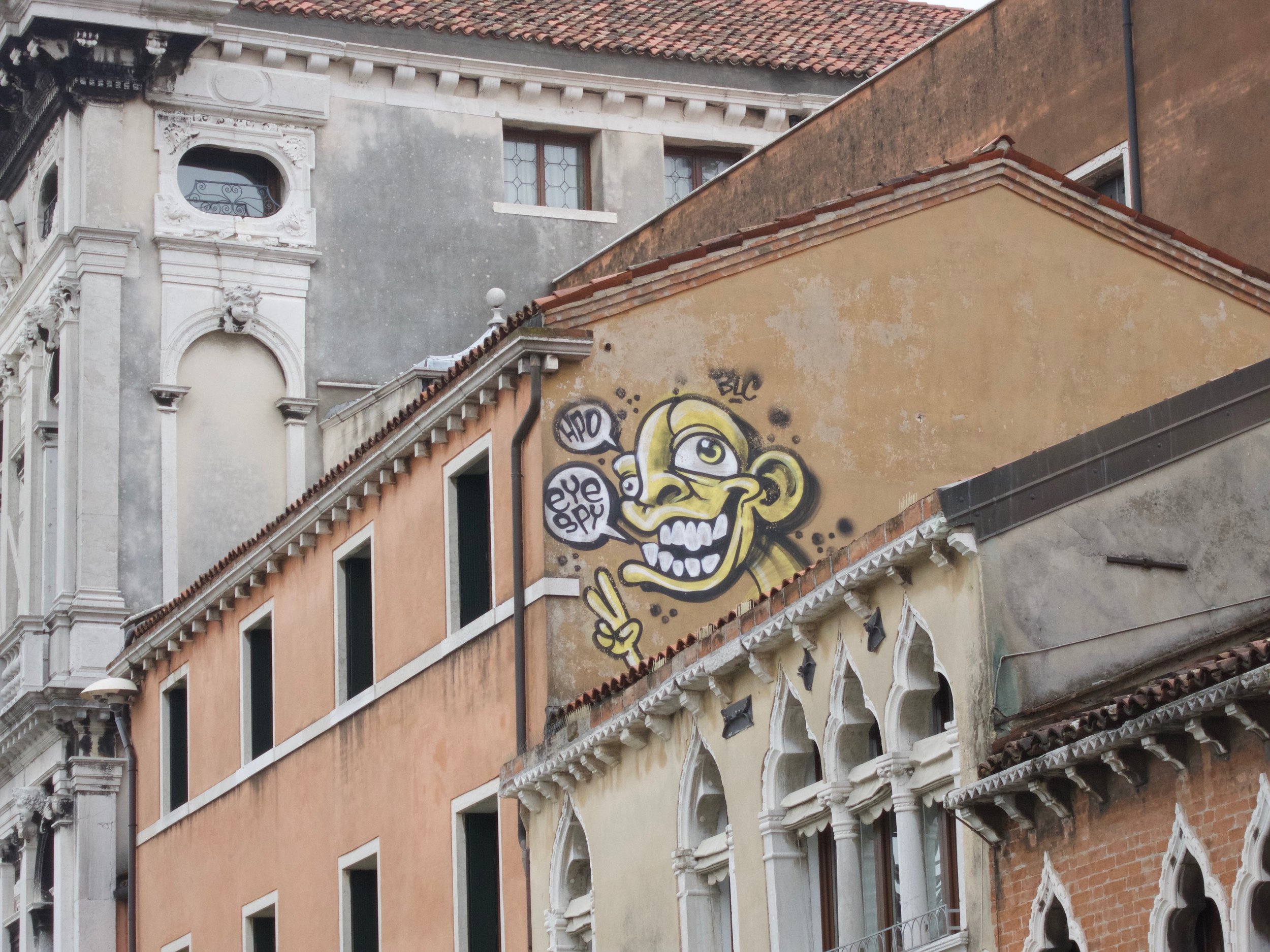Neutralising Stendhal Syndrome? : Thoughts on taking Pictures in Venice.
In his lovely book ‘Venice is a Fish,’ Tiziano Scarpa writes at length on the potentially lethal effects of being continually surrounded by the beauty of this city:
‘In the historic centre, the aesthetic radioactivity is extremely high. Every angle radiates beauty….you are face-butted, slapped, abused by beauty, Andrea Palladio topples you over…Mauro Codussi and Jacopo Sansovino finish you off. You feel terrible. It’s the famous illness of Monsieur Henri Beyle, a disorder known to history as Stendhal syndrome.’
‘the tourists are lucky: the moment they find themselves confronted by a splendid piece of architecture, the neutralize the aesthetic radioactivity by boxing it away in a camera.’
[Tiziano Scarpa, Venice is a Fish: A Cultural Guide, Serpent’s Tail, 2010]
Having recently been one of these pulchro-radioactivity-stabilising camera wranglers, I’ve come home with some thoughts about taking pictures in Venice.
When I’m away, taking pictures is one way I engage with and absorb a new place. If I’m taking pictures, I’m looking closely at my surroundings, taking in new angles, textures and details I would otherwise have missed. But more than that, I’m letting a place come to me, letting it reveal what’s most beautiful, strange, funny and unique about it. It’s a way of playing with a new city, of making friends with it and of discovering my own way around.
Taking pictures in Venice is surprisingly hard to do; surprising, that is, given how many already exist in the world. I’d always thought of Venice as a slow city, and in many ways it is, with gondolas drifting down canals and spires rising above the foggy lagoon, but if you want to take pictures, you have to be quick! There’s no time to linger over settings or to spend time framing your shot. There’s no time for pontificating over angles. In Venice, there’s always someone strolling into view, someone waiting behind you to photograph the same spot, or, inevitably, someone trying to squeeze past you (often with a dog). Space is at a premium here and although you might be going at a dawdling pace, you can’t often stop entirely.
Something I loved about taking pictures of Venice was the constant contradiction; Venice is quite a stately, secretive city, almost furtive in some ways, but on each street corner, on each flat surface, it seems, there’s colourful graffiti. I loved taking pictures of these contradictions; the energetic, bright spray-can shades against the old, crumbling facades. The layers and textures prove so intriguing and bring the city to life in a new way (although residents may not agree). Venice can be a pale city – creams, greys, pastel blues and pinks abound and I loved looking out for the juxtaposition of quiet, old walls against the gaudy, surface colours of graffiti tags and finding ways to frame them.
If you were going to Venice solely to take pictures, you might spend time wandering around and solemnly making notes of places you liked the look of, so that you could come back and spend some time there. However, part of Venice’s charm (and slight malevolence) is that it seems dreamy, but changes faster than almost any other city I have visited. You can walk down the same narrow street day upon day and still wonder if you’ve actually been there before. The light shifts and the walls seem to change colour, you catch something new in the reflections down in the canal, the stones under your feet feel different and that glittery Buddha definitely wasn’t in that shop window yesterday. Sometimes I think that the dreamy, foggy quality of Venice which makes visitors so sedate is a combination of being continually whacked in the face with beauty (as described by Tiziano Scarpa) whilst the city constantly changes and shifts around you, sweeping you along until you’re turned around and confused and unsure as to where you are or how you got there. So, in photography terms, you often end up snowblind. You get home and clear your head and discover that you’ve taken several pictures of the same place, because it looked so different from day to day.
Therefore, I might put it to Mr. Scarpa that, far from being able to neutralize Stendhal syndrome by putting Venice neatly away into a camera, taking pictures in this city, only makes the tourist photographer very much more susceptible to it. Looking closely at Venice, hunting out new angles, details, lines and layers and observing people’s interactions with the place is to willingly open oneself up to being battered around the chops by beauty on a constant basis. If simply being there causes a dream-like malaise, then going with a camera (paintbrush or pen similarly ) is extremely dangerous indeed….




